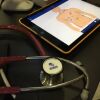Although broadband has a technical meaning, the phrase “mobile broadband” is a wireless carrier marketing term for Internet access. The development of mobile medical devices with internet connectivity is about to have a huge impact on EMS.
Interestingly, it appears to be less driven by clinical medicine than by consumers. In fact, individual patients have already beat us to the punch when it comes to telemedicine.
Back at the TEDMED Expo in 2009, Eric Topol introduced the idea that we are entering a unique period, when combinations of synergistic factors are about to explode our understanding of medical electronics.
He explained that, with mobile broadband networks, specifically broadly available and cheap 3G and now 4G service, combined with smart phones, and innovative medical sensors are about to put the average citizen in charge of their healthcare in powerful new ways.
In San Diego alone, there are more than 500 life science companies working on more than 100 new medical telemedicine products and apps. We have reached what Mr. Topol described as a “perfect positive storm.” We will soon see amazing benefits from these new telemedicine applications. They could help make delivering high-performance EMS a lot easier and keep our patients a lot safer. Further, they could help EMS research and drive evidence-based medicine.
Today internal wireless glucose sensors, and very soon external ones, can tell a diabetic patient their glucose level every five minutes on their smartphone. Sleep monitors and smartphone apps can track every phase of your sleep cycle. Critical care physicians can now see a crashing patient’s virtual ICU monitor on their smart phone. The 24-hour Holter monitor has been replaced with an I-phone app. But we can’t quite do the same things in EMS, yet.
These new technologies and capabilities make our current EMS medical communications look downright primitive. Sending only an ECG to the hospital is old fashioned -- I could do it in 1978. Today we should be sending all the digital information and live video, from all of our increasingly sophisticated diagnostic devices. If we can get a pulse ox reading, why can’t the ER see it too?
Organizations having little to do with EMS are offering a new vision of telemedicine. The Wireless West Health Institute is just one example. The Institute’s mission is to lower health care costs by accelerating the availability of wireless health solutions. Founded in March 2009 by the Gary and Mary West Foundation, the independent nonprofit is dedicated to innovating, validating, advocating for, investing in, and commercializing the use of wireless technologies to transform medicine.
These days, usually the only connection from the ambulance to the hospital is simple voice radio communication. Radio-patient reports are often incomplete and gaps in vital information occur daily. In my last EMS job, most of the time we called the hospital we didn’t even bother with the radio.
We preferred using cell phones for medical communications. I suspect, in many parts of the country, that is still the case. Despite being the youngest of medical professions, EMS is startlingly resistant to change. Most folks seem pretty content with a cell phone report. Usually, the only data being sent besides voice is an ECG.
The big three defibrillator companies each have well designed systems for acquiring and transmitting 12-lead electrocardiograms. Driven by regional STEMI protocols, we have gotten pretty good at this part of the puzzle. It has created new in interest in data transmission. The primary goal has been better cardiac care, specifically treating a narrow subset proven to benefit from rapid specialized care. The plain truth is we could be doing so much more with it.
Fortunately, there have been some exciting developments inside our industry, with real telemedicine systems for EMS on the market. In 2002, General Devices launched the CarePoint Workstation which integrates emergency department communications, documentation and information management. They now have over 400 units installed in hospitals throughout the country. The CAREpoint Workstation is also a receiving platform for EMS telemedicine.
In 2005 they entered the world of EMS Telemedicine with e-Bridge, the world’s first commercially available EMS telemedicine system. This system was used in two citywide EMS telemedicine systems, Tucson Arizona’s ER-Link and Baton Rouge Louisiana’s BR Med-Connect.
Another system is now available from LIFEBOT is DREAMS. As reported this week, DREAMS offers not only direct live transmission of voice and video but patient physiologic data, e.g. ECG, 12-lead STEMI, blood gases, ultrasound, e-PCR, EHR, blood pressure, and a lot more.
They also offer the LIFEBOT Slate, which I reported on earlier this year. The Slate is a held-held digital device for capturing and transmitting mobile data. You can stream video of all this data, your picture, and video of the patient — all at the same time. For the first time, all these machines can “talk” to the ER, and you can stop “talking through” all of this basic vital signs data over the air.
I expect to see more from digital electronic patient reporting software companies. Many of these software engineering firms have long experience working with EMS agencies. It is only logical to expect them to integrate more features and value into their E-PCR systems. One recent example is the Mobius Exchange Command E-PCR software that runs on an I-Pad. Chris Monterra covered this recently on ParamedicTV.com
Think about it for a minute. All the underlying core technologies are getting better and cheaper. We can get mobile broadband almost anywhere now inexpensively. Devices, sensors, and software are all getting more robust and infinitely more portable. It’s only a matter of time now, before we will just call the ER politely just to say “Hi.”
We won’t even need to give our ETA, because that will be displayed on the ER monitor too. It will be based accurately on our current GPS location and estimated travel time history data. When we do spend much time on voice communications it will be listening and getting the help we really need.












